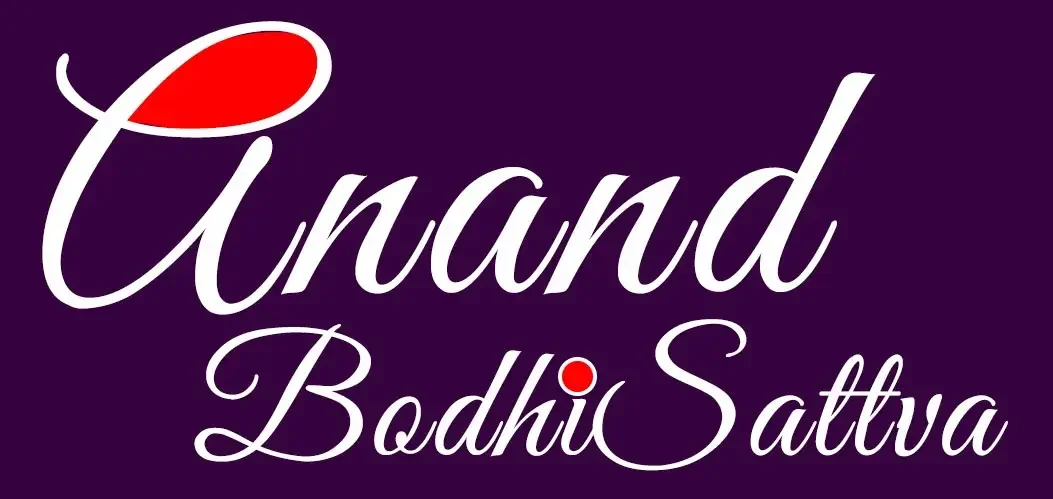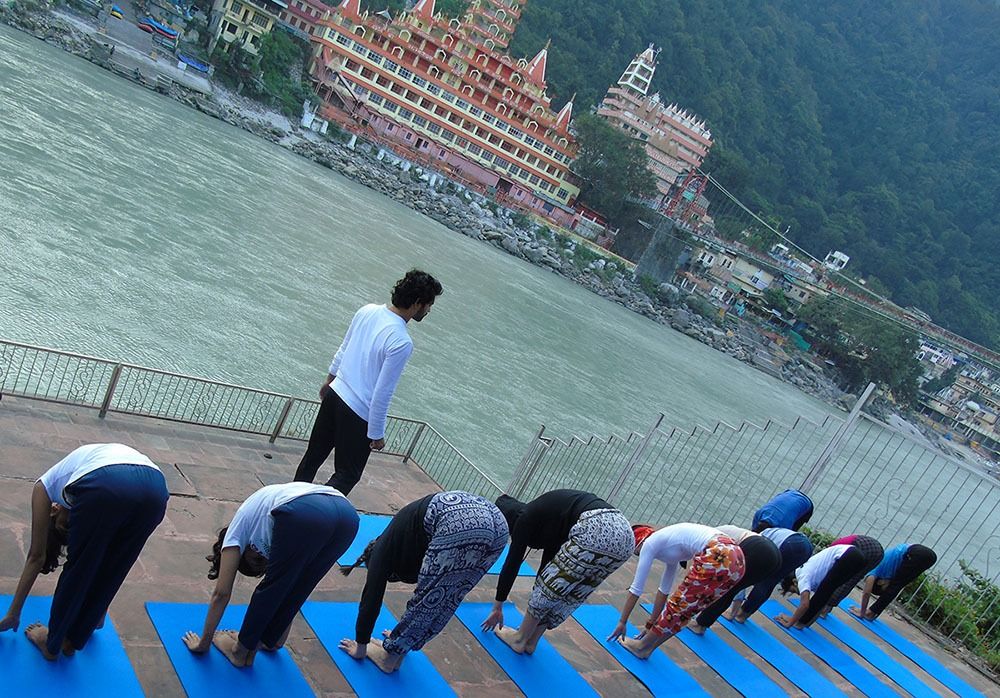TYPES OF YOGA

Since ancient time to the modern age, yoga has been as pure science which observes deeply into consciousness to find out the truth of inner. The modern scientist finds out the truth of the matter by dividing and analyzing it whereas the yogi finds the truth of consciousness through union and synthesis.
Yoga talks about many paths that describe the ways to experience the oneness or union. These different paths are also called as types of yoga. Yoga can be divided into two broad categories, one is Bhavana Yoga and other is Prana Samyama Yoga.
I) BHAVANA YOGA
Bhavana literary means cultivation of feeling. Bhavana Yoga specifically focused on a particular attribute or quality of a person as a path to achieve Self-realization or to attain the highest state of consciousness. It is again subdivided into three major parts.
They are
1) Karma Yoga – The Path of Action
2) Jnana Yoga – The Path of Wisdom
3) Bhakti Yoga – The Path of Devotion
1) Karma Yoga – The Yoga of Action
Karma yoga is the yoga of action or work. It is the path of dedicated work by renouncing the results of our actions as a spiritual offering rather than hoarding the results for ourselves. This path teaches us to do our own duties in life selflessly by dedicating the fruits or result of our action to others. It is a process of disengaging the ego from the result of the action. This path is primarily chosen by those who are outgoing in nature and body-oriented personality. It purifies the heart by teaching you to act selflessly, without thought of gain or reward.
2) Jnana Yoga – The Yoga of Knowledge or Wisdom
In Jnana yoga, the mind and intellect are used to inquire into its own nature and to transcend the mind’s identification with its thoughts and ego. The fundamental goal of Jnana yoga is to become liberated from the illusionary world of Maya – the thoughts and perceptions and to achieve union of the inner Self – the Atman with the Universal-self – the Brahman. This is achieved by steadfastly practicing the mental techniques of self-questioning, reflection, and conscious illumination. This path is suitable for those whose mental faculty is more predominant and strong.
3) Bhakti Yoga – The Yoga of Devotion.
Love is the most fundamental drive of every living entity. Bhakti Yoga is the yoga of unconditional love. This path teaches to channeling and transmuting the emotions into unconditional love and compassion. A bhakti yogi is motivated chiefly by the power of love and sees God as the embodiment of love in each and everything for Self-realization. This path appeals particularly to those who are more heart oriented and of an emotional nature. Through prayer, worship and ritual he surrenders himself to God or Supreme Nature.
Patanjali Kriya Yoga in Context of Bhavana Yoga
The second chapter of Patanjali Yoga sutra explains Kriya yoga – the combination of three practices such as Tapas – Physical discipline or practice, Svadhyaya self-study or mental practice, Isvarapranidhana surrender to God or devotional practice. Rishi Patanjali suggests Kriya Yoga practice to develop an inner ambience of samadhi (Samadhi Bhavana) by weakening the powerful grip of Kleshas – the afflictions. According to Patanjali these three components of kriya yoga have equal importance in our spiritual journey. The well integration of Tapas, Svadhyaya and Isvarapranidhana quickens to achieve our ultimate goal of life i.e. Samadhi.
We can correlate Tapas, Svadhyaya and Isvarapranidhana of Patanjali Kriya Yoga with Bhavana Yoga where tapas can be counted as Karma Yoga, Svadhyaya under Jnana Yoga and Isvarapranidhana under Bhakti yoga to attain samadhi. From the holistic life point of view, we are combination of body, mind and heart, we need yogic practices to balance and integrate our body, mind, heart. Hence, Kriya yoga is one of the most balanced practices of inner journey.
II) PRANA SAMYAMA YOGA
Prana Samyama Yoga describes the attainment of Samadhi through expansion and control of Prana. The following yoga traditions comes under this category
1) Mantra Yoga – Yoga of Recitation
2) Hatha Yoga – Yoga of Energy
3) Laya Yoga – Yoga of Absorption
4) Raja Yoga – The Royal Path or the Path of Meditation.
1) Mantra Yoga – Yoga of Recitation
Mantra yoga is a branch of Tantra yoga that uses different sounds in form of mantras for healing, relaxation, awakening of hidden energy source – the Kundalini, energy centers- the Chakras and awakening of Self. The science of mantra yoga helps us to understand the structure evolution of the whole universe through sound. Mantras are very effective tools to clean, activate and expand the energy body. It helps to break down the obsessive nature of the mind and to foster calmness and quietness of the mind. Mantras bring very good control over destructive negative emotions and channelize the negative emotional energy into positive one. Mantras and its vibrations help to experience higher states of consciousness easily by working deeply on our body, mind, and soul. Mantra yoga also referred as Japa yoga which means reciting mantras as practice.
2) Hatha Yoga – Yoga of Energy
Hatha Yoga is a classical and traditional form of yoga. Hatha yoga is the mother of all forms of modern yoga practices. It prepares the fundamental base for our higher yoga practices like meditation and samadhi. The word “Hatha” is the combination of “Ha” meaning ‘Sun’ and “Tha” meaning ‘moon.’ Hence Hatha yoga brings both sun and moon energies together creating the perfect balance within us.
According to Swami Swatmarama, the author of Hatha Yoga Pradipika “The real purpose of hatha yoga is to open the gate to Self-realization. He explains the entire ‘science’ of Hatha yoga – including asana, pranayama (breath techniques), Shatkarma (cleansing or ‘purifying’ practices), mudra (symbolic gestures) and bandha (body locks). The Hatha yoga practices are especially to not only being a physical practice intended for health and fitness, but also for awakening vital energies, chakra and kundalini energy and higher consciousness. In the beginning, the main purpose of hatha yoga is to bring purification, suppleness, remove diseases, strength, and stability to the body which in turn helps to stabilize the mind. Then it helps to open the Energy channels (Nadis) and Psychic centers (Chakras) by restructuring the pranic flows which allows us to move towards Raja Yoga.
3) Laya Yoga – Yoga of Absorption
Literary, Laya yoga means complete absorption. Yogi Gorakhnath; the disciple of yogi Matsyendranath has developed the Laya yoga. It is bass on Shaivism practices and involves many specialized practices for one- pointedness of the mind absorption into the ultimate truth. It talks about numerous active & passive practices like Asanas Pranayam dhyana, samadhi. The main aim of Laya yoga is to channelize the attention of the mind into listening the eternal inner sound (Nada) to attain samadhi or Self Realization.
4) Raja Yoga – The Royal Path or the Path of Meditation.
The literary meaning of Raja Yoga is the key of all yoga or the Royal Path .It is path of self-discipline to attain highest state of consciousness or Self Realization. It is called Royal Yoga as it speaks about how to get direct control or mastery over mind for samadhi. It is one of the oldest system of yoga and many ancient spiritual text talked about raja yoga .it has been compiled and unified by Rishi Patanjali in his famous text of yoga sutras in form of Ashtanga Yoga the eight fold path. It is being perceived as the ultimate goal of yoga practice leads to transcendental State of consciousness. Rishi Patanjali describes in details about the eight fold path or eight limbs as .
- Yama – Self-restraint or Social code of conduct
- Niyama – Self-Observance or Personal Discipline
- Asana – Postures
- Pranayama – Breathing Practices, Control of Prana
- Pratyahara – Inward journey of Senses or withdrawal of Senses
- Dharana – Concentration
- Dhyana – Meditation
- Samadhi- Super-Conscious State or Transcendental State
Raja Yoga emphasizes the practice of meditation for spiritual growth and evolution of consciousness and self-realization.
Yoga Essence Rishikesh delivers classical Hatha Yoga, Raja Yoga, Patanjali Kriya Yoga, Mantra Yoga and Yoga Nidra in accordance with contemporary spirit through Transformational 200 hour Yoga Teacher Training Course or Holistic 200 hour Yoga Teacher Training Rishikesh India. We teach Yoga as a transformative process with its full vibrancy and sanctity. The transformation will cover all level of our existence i.e. body mind, heart and spirit. Upon completion of the 200 hour Yoga Teacher Training Course in Rishikesh, trainees will have the privilege to be ready of bringing this knowledge of yoga to many more people.


